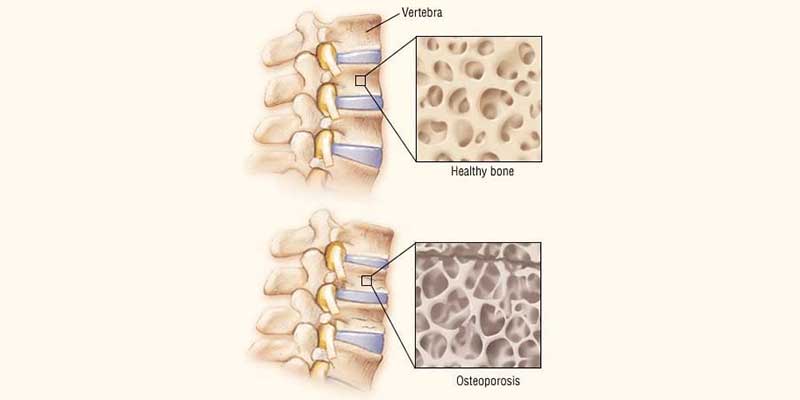- drmanojgaddikeri@gmail.com
- Wockhardt Hospital, Mira Road
- For Appointments Call: +91-22-40543000

Osteoporosis is a condition that weakens bones, making them fragile and more likely to break. In simple terms, it causes bones to become less dense and porous—like a sponge—which reduces their strength. As a result, people with osteoporosis are at a higher risk of fractures, even from minor falls or injuries that wouldn’t normally cause a break.
What Happens in Osteoporosis?
Bones are made up of a combination of protein, collagen, and calcium. This combination provides structure and strength. However, in osteoporosis, the balance between bone formation and bone loss is disturbed, leading to a decrease in bone density. When bones become too weak, they become vulnerable to fractures. Common fractures related to osteoporosis occur in the spine, hips, wrists, and ribs. Even something as simple as bending over or coughing can lead to a fracture if the bones are severely weakened.
It’s important to know that osteoporosis doesn’t always show symptoms in its early stages. In fact, many people may not realize they have it until they experience a fracture. This is why it’s crucial to stay aware of your bone health, especially if you have risk factors for the condition.
Who is at Risk?
Osteoporosis affects both men and women, but it’s more common in women, especially after menopause. Other risk factors include:
Signs and Symptoms
In the early stages, osteoporosis usually doesn’t cause any pain or discomfort. However, as the condition progresses, you may start noticing symptoms like:
How is Osteoporosis Treated?
Osteoporosis is treatable, and the key is early detection and prevention. The main goal of treatment is to slow down bone loss and reduce the risk of fractures. Treatment options include:
Preventing Osteoporosis
While you can’t stop the aging process, there are steps you can take to reduce your risk of osteoporosis. Eating a balanced diet, staying active, quitting smoking, and limiting alcohol consumption are essential habits for maintaining strong, healthy bones.
If you’re concerned about your bone health or believe you may be at risk for osteoporosis, it’s important to talk to a healthcare provider like Dr. Manojkumar Gaddikeri, an orthopedic spine surgeon. He can assess your risk and help create a personalized plan to protect your bones.
Taking proactive measures today can help you maintain strong bones for a healthier future.